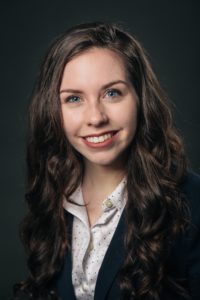 This post was written by Justine Thomas, who received the AMIA+DLF Cross-Pollinator Registration Award to attend the virtual AMIA Spring 2021 conference.
This post was written by Justine Thomas, who received the AMIA+DLF Cross-Pollinator Registration Award to attend the virtual AMIA Spring 2021 conference.
Justine (@JustineThomasM) is currently a Digital Programs Contractor at the National Museum of American History (NMAH) focusing on digital asset management and collections information support. Prior to graduating in 2019 with a Master’s in Museum Studies from the George Washington University, Justine worked at NMAH as a collections processing intern in the Archives Center and as a Public Programs Facilitator encouraging visitors to discuss American democracy and social justice issues.
“Restoration is the rejuvenation of the soul.” This powerful quote from AMIA’s opening plenary set the tone for the conference’s powerful and engaging lesson of restoration, preservation, and sustainability in the archival field. Over the course of the conference, AMIA, the Association of Moving Image Archivists, hosted several informative sessions about the successes and challenges facing the audiovisual field as well as AMIA’s organizational role in supporting institutions. These sessions included discussions about audiovisual preservation, digitization projects during the pandemic, the state of the archival world ten years in the future, and even virtual film archive tours.
I attended AMIA’s conference as a DLF Cross-Pollinator and was excited to see what other institutions are doing to enable access to digital audiovisual collections, reach diverse audiences, and facilitate meaningful conversations. As an aspiring digital archivist and emerging professional in the field, it was impactful to hear from a wide breadth of moving image archivists at different points in their careers, sharing successful preservation projects. I especially liked learning more about projects such as the Merry Pranksters Audiovisual collection, which was a ten-year endeavor preserving films from the wild road trips and partying days of Ken Kesey, author of One Flew Over the Cuckoo’s Nest. The presenters showed the complete lifecycle of the Merry Pranksters archival collection – from initial preservation efforts, to cataloging description models and the completion of a finding aid, commercial licensing requests, and the Magic Trip documentary produced in 2011 using footage from the collection. While this collection had its share of preservation woes working with fading and rapidly degrading materials, the collections staff’s thoughtful and deliberate conservation efforts resulted in a well-documented and restored film collection that is publicly accessible for generations to come.
Aside from discussing the essential and timely process of restoring moving images, one of the most poignant points the conference emphasized was the lack of diversity in the archival field and how organizations like AMIA can and should encourage meaningful change in the profession. From the opening plenary until the closing session of the conference, it was clear that AMIA wanted to highlight the importance of working through uncomfortable and difficult conversations to encourage true dialogue supporting diversity, equity, inclusion, and access. Speakers like Pamela Vizner and Michael Pazmino led the powerful opening discussion about confronting the widespread issues of inequity in the underfunded field of audiovisual preservation, which puts restrictions on who can afford to be in the archival profession. This inequity creates borders in moving image archiving, which only adds to the difficulty underprivileged individuals face when breaking into the field. To facilitate discussion about these problematic practices, AMIA created Borderlands, specific sessions to showcase conversations on how the field of moving image archiving can operate across borderlands, in hopes of becoming a more collaborative and equitable profession in the future.
One of the most notable examples of collaboration across borderlands was the screening of the film Star Wars: A New Hope, dubbed in the Navajo language. Manuelito Wheeler of the Navajo Nation and former director of the Navajo Nation Museum discussed the process of creating the dubbed film to promote and preserve the Navajo culture and language. He described the critical moment indigenous communities are facing with the rapid extinction of native languages and the immense cultural loss the Navajo Nation would face if the language is not saved. The ability to showcase a film as culturally significant as Star Wars in the Navajo language was an immense success and taught generations of Navajo individuals the fundamentals of the Navajo language and the necessity of preservation efforts.
These imperative presentations about borderlands and inequity in the profession were the most powerful aspects of my conference experience. They showed that even in a virtual environment, organizations could actively attempt to highlight the problematic and systemic issues in the field and offer spaces to discuss the changes professional organizations can make and projects institutions can take on to support diverse communities. I hope to attend subsequent AMIA conferences and look forward to hearing more about future borderlands conversations and opportunities for collaboration.
